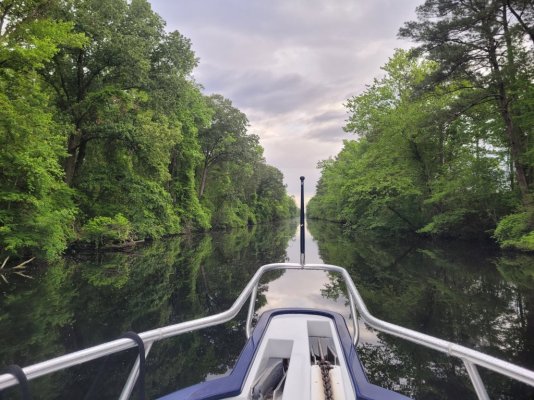The term "GPS compass" can be confusing (IMHO)... A GPS by definition, gives one LAT/LON information only. The chart plotter can take GPS position LAT/LON at one point in time; Then it can take the position LAT/LON at another future time and calculate a "heading".... but this can be wrong... The heading should be the direction the boat is actually pointing. For example, if one is in a strong cross current (like the gulf stream crossing from Florida to the Bahamas), the boat will "crab" to stay on the route line. A fluxgate compass, shows the instantaneous direction the boat points. A calculated "GPS compass" cannot tell that the boat is crabbing... that said, the GPS 24XD has a built-in heading sensor (I am guessing fluxgate) and a highly accurate GPS..
I would have thought that if the SP70 autopilot were truly dumb in the Navigate mode, it would take the data coming via nmea from the chart plotter and follow it. I think the SP70 uses some form of algorithm using its own fluxgate with the data it is getting from the 1042xsv, and determines how to steer.
I can see the nmea APB sentence the 1042xsv is sending to the SP70.. That sentence will say you are off the magenta line by X nautical miles and the same sentence says steer right to get back on course.... the the SP70 does not do it... at least not quickly. If it were truly dumb, it would turn 90 degrees and head to the magenta line... but it does not... it just hangs off the side of the magenta line until a turn is sent... then the boat turns..
The Sitex manual covers how to adjust the autopilot. I would suggest starting with that to ensure the basic steering control is working as best it can. Pay particular attention to the Fast and Slow settings. Depending on boat speed, it takes more or less rudder to control the boat. This is particularly true of planing boats.
You hit on some important points above, but let me restate them in terms use by nav electronics.
Heading is the direction the bow of the boat is pointing. This isn't necessarily the direction that the boat is actually moving once you factor in current, wind, etc. Heading comes from an electronci compass of some sort, typically a Flexgate, Rate Compass, or Satellite Compass.
Course, aka Course over Ground, aka COG is how the boat is actually moving. As you surmised this is calculated based on successive position reports. One difference is that it's done by the GPS device, not the plotter. A GPS will report position, COG (direction of movement) and Speed over Ground (SOG).
We can only guess what the actual algorithms are in the pilot, but to me it makes sense that it steers a heading to match the Bearing to Waypoint heading that it's given from the plotter, then adjusts that heading as needed to correct for cross track error. That will also correct for set, drift, and any other external influences. Although I didn't see it in my quick scan of the Sitex manual, newer pilots have a setting called "response" or something like that to control how aggressively the pilot tries to correct cross track errors. Yours is very lax about that. But I can't say of that's because your fundamental steering settings aren't optimal, if there is a "response" setting that I'm not seeing, or if 50' of XTE is normal for the Sitex. For any pilot made in the last 15 years I'd say 50' is a very large XTE in calm water, and likely to trigger an alarm.
Getting back to Heading vs Course, the convention seems to be that an AP in Auto mode steers to a heading. That said, some have options like "no drift" where the pilot will steer a Course rather than a heading. But I have been told that in some implementations of "no drift" the pilot creates it's own trackline from current position to the waypoint, and essentially operates in Nav mode using it's internally computed track line rather than a trackline computed by the plotter.

